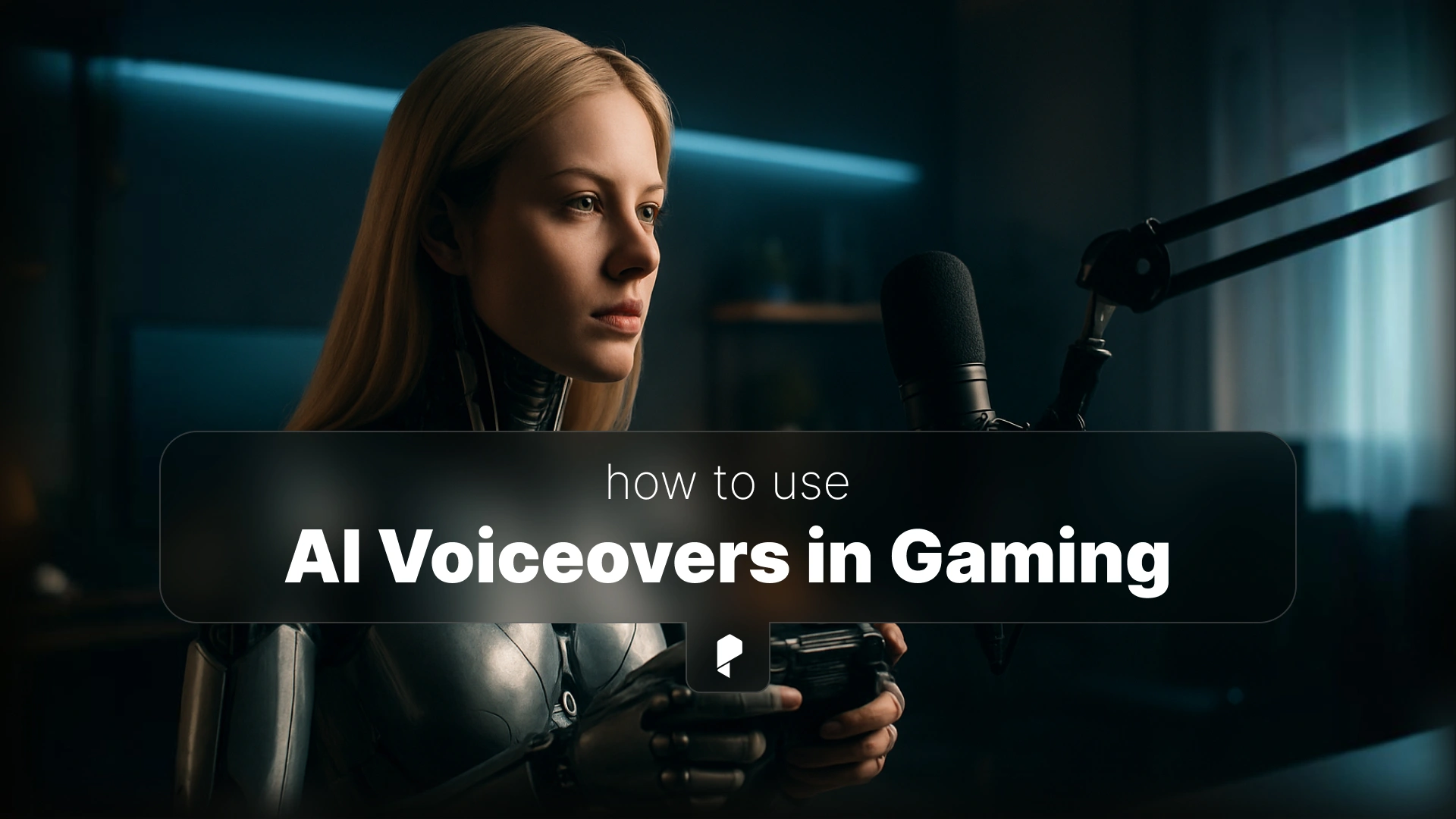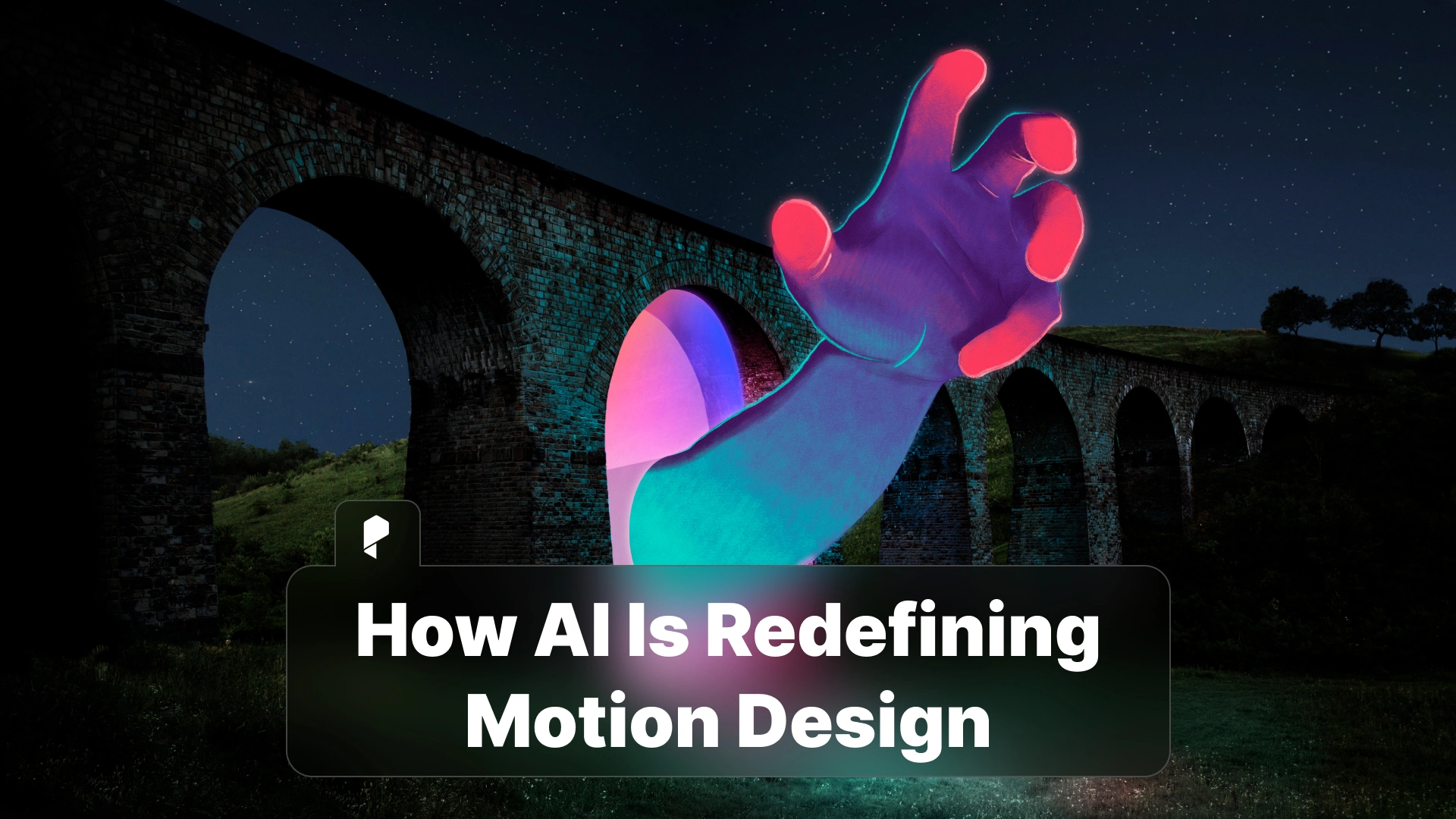AI Voiceovers in Gaming & Interactive Media

Now, imagine if developers could generate thousands of natural, expressive voices instantly. All customizable to fit tone, emotion, and accent. That’s exactly what AI voiceovers in gaming are bringing to the table.
Traditional voice acting will always have its place, but AI voiceovers are changing how worlds are built, how stories are told, and how players connect with characters. From indie developers to AAA studios, AI-driven voices are opening up possibilities that were once unimaginable.
If you’re exploring how to use AI voiceovers for games, check out Pixflow’s AI Voiceover tool. It’s designed for creators who want to bring high-quality, multilingual voiceovers to their projects quickly and affordably.
The Role of Voice in Immersive Gaming
Voice acting gives games emotional depth and realism. It transforms silent scripts into characters with history, humor, and humanity. Without it, the best-designed worlds can feel hollow and disconnected.
However, creating great voiceovers is traditionally a complex, expensive process. Studios must hire actors, schedule recordings, handle retakes, and manage post-production, all before localization begins. This limits how many characters can have unique voices and how often dialogue can be updated.
That’s where AI voiceovers in gaming begin to change the game. They don’t replace the artistry of human performance, instead, they extend it. Developers can now experiment with AI voices for NPCs, test dialogue variations instantly, and localize content without the long turnaround times of traditional pipelines.
To understand how this technology fits into the broader voiceover landscape, you might want to read AI Voiceovers: The Complete Guide. It breaks down the fundamentals and creative applications across industries.
How AI Voiceovers Are Transforming Game Development
For instance, instead of recording 500 lines of NPC dialogue in a studio, a developer can generate them dynamically using AI, adjusting tone and pitch until the performance fits the scene.
But the real magic happens when this technology is integrated with procedural or real-time systems. Imagine a massive open-world RPG where NPCs respond to player choices in fresh ways, no pre-recorded limitations, no repeated lines. AI-driven dialogue systems can make conversations feel genuinely new each time you play.
This kind of real-time dialogue generation also empowers indie and mid-tier studios that don’t have Hollywood budgets. By reducing costs and time, smaller teams can create experiences that rival larger productions. That’s one of the biggest benefits of AI voiceovers for indie game developers. It’s scalability, without compromise.
Want to see what’s possible today? Explore the tools and workflows that make it happen in Best AI Voiceover Tools in 2025.
AI Voiceovers for NPCs and Dynamic Dialogue
With AI voices for NPCs, developers can create thousands of unique lines automatically, ensuring no two interactions sound the same. These systems can even pull from procedural generation tools to adapt dialogue to the player’s actions, environment, or emotional state.
For example, an RPG can dynamically generate character responses based on player morality, while a simulator can provide AI-driven radio chatter that reacts to gameplay events. This level of variability makes every session feel distinct and personal.
Moreover, AI-driven voices make localization faster and more inclusive. With multi-language support, developers can instantly translate and voice content for global audiences, all without scheduling new voice sessions or managing massive file libraries.
It’s not hard to imagine a future where synthetic voice actors in video games coexist alongside human performers, working together to create richer worlds and more dynamic storytelling.
If you’re curious about how this method can enhance your game, check out Pixflow’s AI Voiceover tool for a deeper dive into the advantages.
AI Voiceovers in Interactive Media and Storytelling
Imagine putting on a VR headset and hearing a narrator who adapts to your choices, a voice that changes tone when you hesitate, or grows urgent during intense moments. That’s the promise of AI voices in immersive and interactive experiences.
Developers are already experimenting with AI storytellers and virtual hosts that guide players through branching narratives or educational simulations. These systems can react to player emotions, progress, or even spoken input, turning every experience into a co-created journey.
AI-driven narration isn’t just about automation, it’s about connection. When combined with smart storytelling design, these synthetic voices can make digital worlds feel human again.
To explore where this technology is headed next, you can read The Future of AI Voiceovers: Trends & Predictions. It highlights how emotional AI and real-time synthesis are redefining storytelling itself.
Advantages of AI Voiceovers for Developers
1. Scalability
Whether you’re building a small indie title or a sprawling RPG, AI allows you to generate hundreds of unique voices instantly. You can give life to every guard, shopkeeper, or creature without having to record each one individually.
It’s a massive step toward more believable, populated worlds where every voice feels distinct.
2. Localization
Localization has traditionally been one of the most time-consuming and expensive parts of production. With AI voice generation for game development, you can instantly create localized voiceovers in dozens of languages.
This makes global releases smoother and allows smaller teams to reach international audiences, without outsourcing or re-recording lines.
3. Iteration & Experimentation
Voice lines often evolve as stories change. With AI, developers can tweak scripts, regenerate dialogue, or adjust performances instantly. This flexibility supports a more agile creative process, encouraging experimentation instead of locking teams into costly recording cycles.
4. Accessibility for Indie Creators
Perhaps the biggest win is accessibility. AI voice tools lower the barrier for small studios, solo developers, and students. You no longer need a recording booth or a cast of actors to deliver professional-grade dialogue.
If you’re exploring how to integrate this into your own workflow, check out Pixflow’s AI Voiceover, it’s a simple yet powerful way to generate multilingual, high-quality voices for your projects.
For a broader perspective on how creators are using AI across different industries, you can also read Benefits of AI Voiceovers for Content Creators.
Challenges and Ethical Considerations
1. Emotional Authenticity
While AI has made huge leaps, synthetic voice actors in video games can sometimes lack the nuanced emotion that seasoned human performers bring. Developers must balance automation with artistry, ensuring characters still feel alive and emotionally grounded.
2. Copyright and Consent
When using voice cloning or synthetic voices, consent is crucial. Reproducing an actor’s voice without permission raises serious legal and ethical concerns. Reputable AI tools prioritize transparency and licensing to protect both creators and voice talent.
3. Creativity vs. Automation
There’s also the creative balance. AI shouldn’t replace human storytelling, it should empower it. The best results come from hybrid workflows, where human direction shapes the performance while AI enhances scalability and adaptability.
These considerations are vital to building trust and quality in AI-assisted production. As the technology matures, more developers are finding thoughtful ways to blend ethics with innovation.
The Future of AI Voice Acting
Imagine characters whose tone shifts dynamically based on gameplay, fear during combat, calm during dialogue, or excitement during victory. That’s where emotionally adaptive voice synthesis is heading.
Future voice engines may even analyze gameplay context to adjust performance. Pacing speech during tense moments or softening delivery during calm exploration. These features will push immersion to new levels.
And instead of replacing actors, AI will likely become an extension of traditional voice acting. Human performances can be enhanced, expanded, or localized through AI tools, allowing actors to scale their presence across massive worlds and multiple languages.
If you want to understand how the broader AI landscape is evolving for businesses and creators, you can also explore AI Voiceovers for Businesses: Marketing, Training, and Beyond.
Conclusion
While ethical use and emotional depth remain challenges, the potential is undeniable. AI voiceovers in gaming are making it possible to build richer, more immersive worlds faster than ever before.
As the line between human and machine performance continues to blur, one thing is certain: the future of game storytelling will be both intelligent and deeply human.
Ready to voice your next project? Explore Pixflow’s AI Voiceover and start creating expressive, multilingual voices that bring your characters to life.





